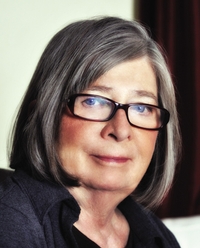Blood Rites: Origins and History of the Passions of War
Barbara Ehrenreich. Metropolitan Books, $25 (304pp) ISBN 978-0-8050-5077-6
Ehrenreich (The Snarling Citizen) has a well-deserved reputation as a trenchant critic of contemporary American society. Her new book goes beyond the class and gender parameters that have shaped her previous work, however. Here, Ehrenreich argues that war is a self-replicating activity independent of both economics and culture, that it is a collective denial of victim status for a species that has been prey far longer than it has been predator. And even more important to war's appeal, she contends, is its call for self-abnegation. Ehrenreich compares war to religion in that both emphasize ritual sacrifice, although she views killing enemies as less important than offering and giving one's life in a community-sanctioned matrix. This ""religiosity,"" Ehrenreich argues, makes war essentially impervious to moral rebuke. War's passions are righteous to those experiencing them. They are sufficiently strong in that from being the province of a special ""priesthood,"" war has been democratized. It is arguably being degendered as well, with women accepted as full participants in what had been a defining male activity. Ehrenreich's concluding assertion that mass participation in war has begun to generate mass opposition to war is an undeveloped variation on Henry James's 19th-century call for a ""moral equivalent."" In addition, Ehrenreich tends to overlook alternate interpretations. Donald Kagan's On the Origins of Wars, for example, convincingly presents honor rather than sacrifice as central to the psychology of war. Nor does Ehrenreich address the complex interactions of governments, societies and armed forces--the Clausewitzian triad that still retains significant credibility as a model for war's origins. But while Ehrenreich's study may not qualify as first-rate history, its provocative hypotheses will stimulate the kind of debate and inquiry that her work seldom fails to generate. 30,000 first printing; author tour. (May)
Details
Reviewed on: 04/28/1997
Genre: Nonfiction
Compact Disc - 978-1-5491-0342-1
Downloadable Audio - 978-1-4789-6957-0
Paperback - 384 pages - 978-1-4555-4370-0
Paperback - 304 pages - 978-0-8050-5787-4
Paperback - 304 pages - 978-1-84408-574-3
Paperback - 256 pages - 978-1-84708-353-1


